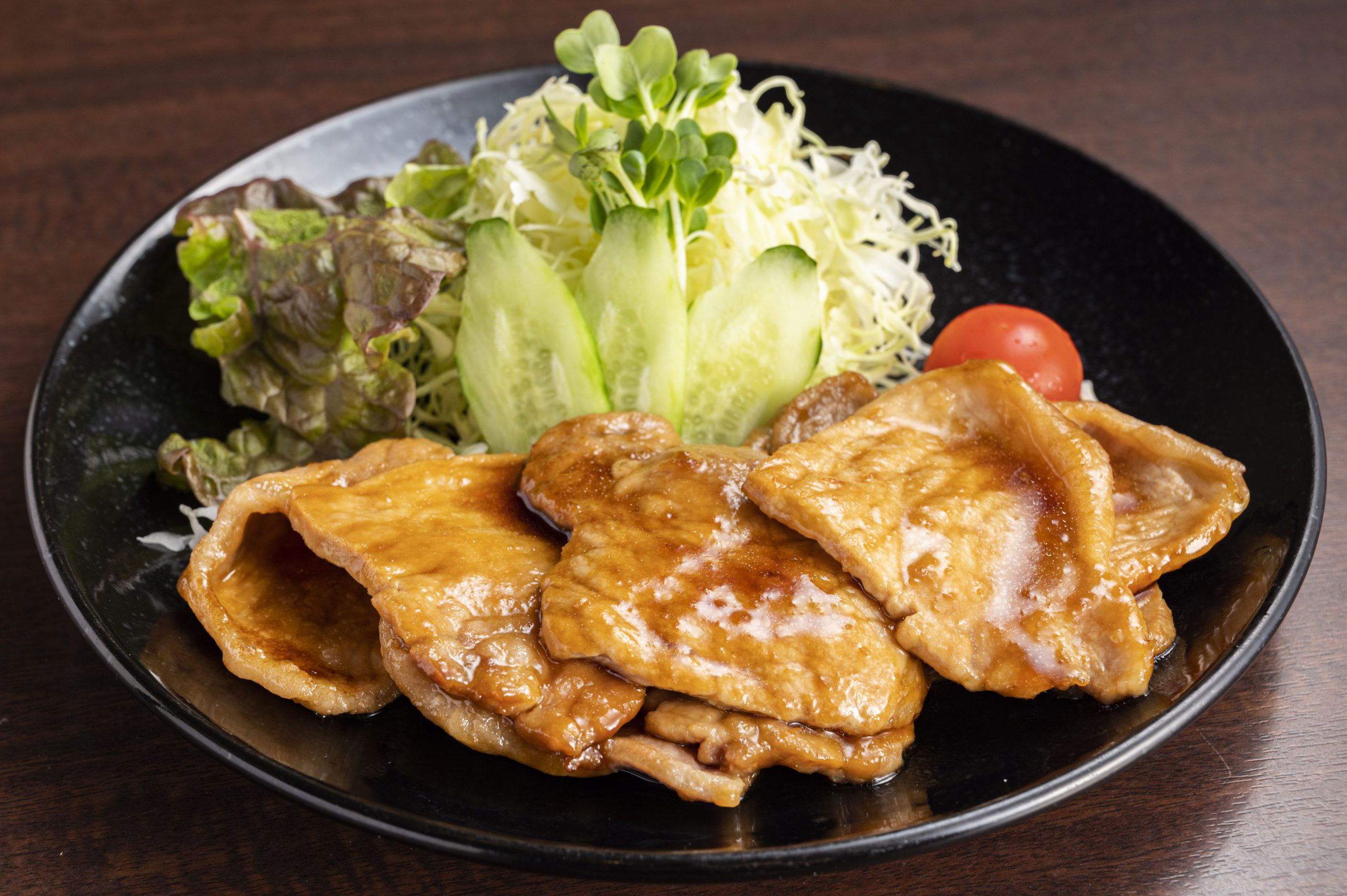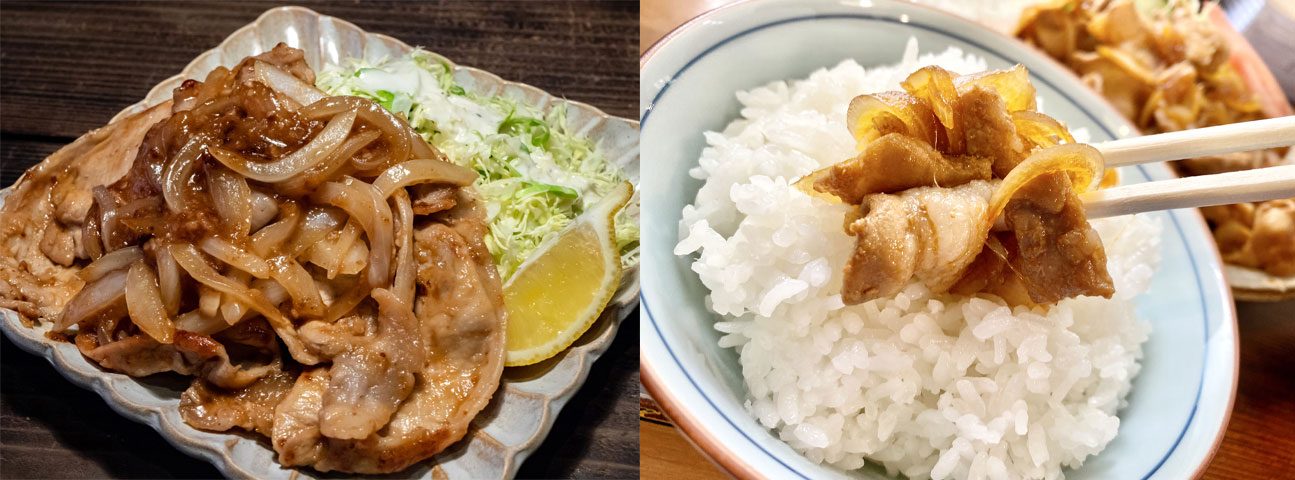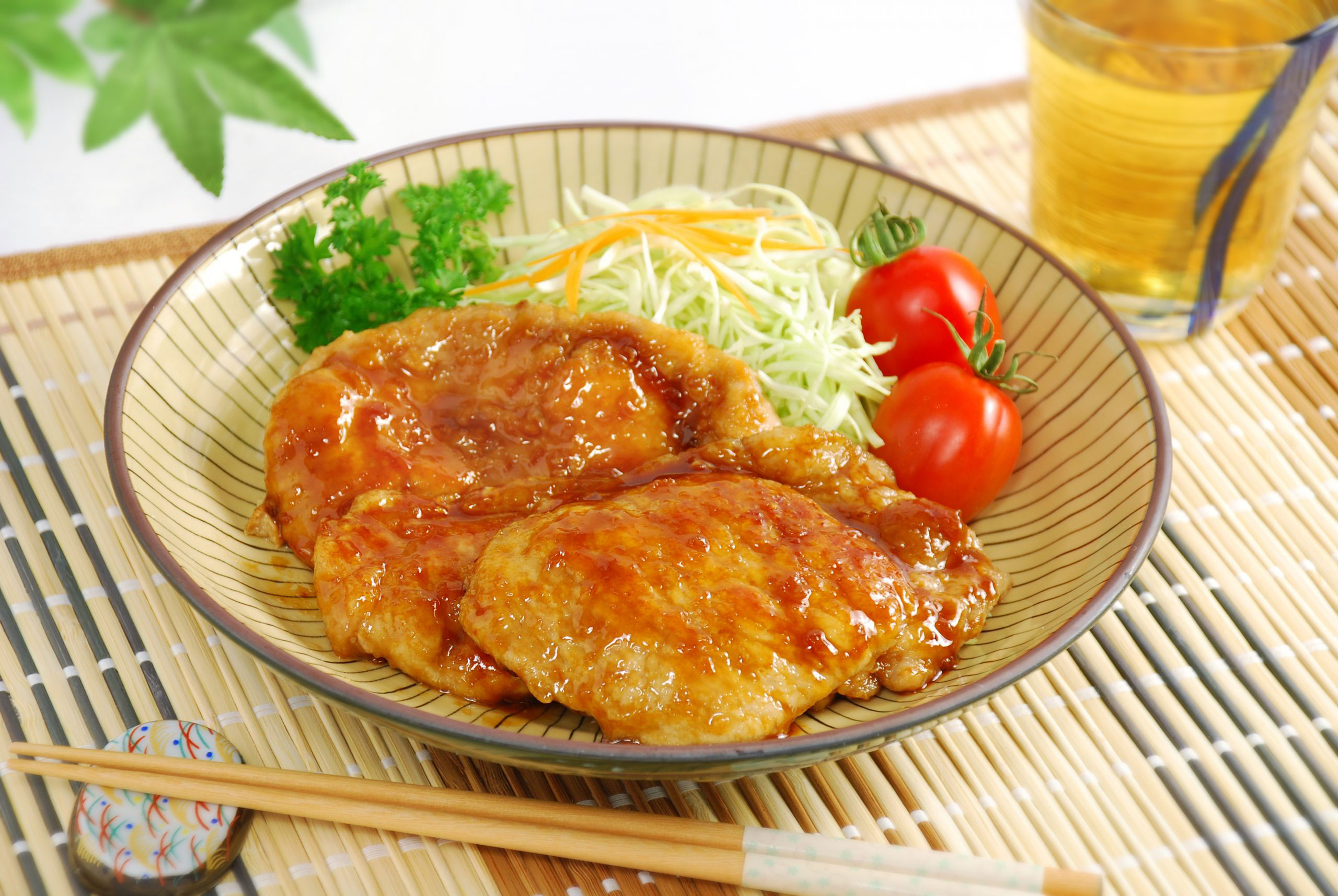
Today, we’re visiting mom’s kitchen to indulge in a Japanese classic – Shogayaki, or Ginger Pork. The signature ginger and soy sauce marinade transforms the thin tender pork slices into a mouthwatering entrée, served crispy over rice and cabbage. The best part? After you marinate the pork, it’s usually ready in a snap, around 10 minutes or less. It’s most popular as a lunchtime bento box or teishoku set, which includes rice, miso soup, and pickles. But in mom’s kitchen, this simple dish makes for an excellent flavor-packed meal any time of day!
Shogayaki Origins
In Japanese, ginger is shoga (生姜) and “yaki” (焼き) means grill. In other words, it directly translates to “grilled with ginger.” If you mention “shogayaki” in any place in Japan, most people will assume you’re referring to pork shogayaki, but other variations with beef also exist.
No Recipes states that this dish originated at a Tonkatsu restaurant (another famous pork dish) about 70 years ago in the city of Ginza, where the chef decided to marinade his pork in a simple ginger sauce before pan frying it golden brown.
Since then, the dish has taken off and quickly become a Japanese home staple and is the most famous pork dish in the country second only to Tonkatsu.

Breaking Down the Ingredients
Ginger
The star of this dish is most certainly ginger, where the ingredient creates a distinct warm spice and mouthwatering aroma. Ginger contains an enzyme called Zingibain, which breaks down the pork’s protein, making the meat more tender over time. Ginger also contains antimicrobial compounds that fight off the growth of pathogens, which means it keeps your meat fresher for longer, sometimes up to a week! There are also many additional health benefits from ginger alone, from reducing inflammation, protecting the immune system, and some even say that fights fatigue caused by the hot and humid weather during Japanese summers!
Soy Sauce
Soy sauce is the backbone of this dish as well as for many other sauces in Japanese cuisine. By adding saltiness to the sauce, it brings out the meat’s peak flavors, and when combined with the other ingredients it adds to the signature “umami” of this dish.
Sake
Sake may be a neutral-flavored ingredient but plays an essential role in the marinade. On top of gently adding depth and flavor to the umami of the dish, the alcohol in the sake also helps break down and tenderize the meat and also cuts any unpleasant odors from the pork.
Mirin
Mirin is a subtly sweet Japanese rice wine with a lower alcohol content than sake. It has a syrupy texture that adds sweetness and thickness to the sauce, rounding out the saltiness from the soy sauce and adding body to the sauce.
Pork
Various cuts of pork can be used for this dish, but the most popular include leg, sirloin, or shoulder. Others will even use thicker cuts, like pork collar. It’s all up to you and what meats you have available or prefer.
There are a couple of ways to prep the pork as well- either by hand-cutting it or using a meat slicer to slice it into super-thin pieces.
Pro tip: frozen meat is much easier to slice into thin pieces
When it comes to marinating the pork, some say to leave the pork for at least an hour, and others will say to let it sit overnight. Others will even say to skip the marinating process altogether and send it straight to the pan! Either way, the pork in ginger will keep for a few days, so you can continue to enjoy or share this delicious dish however you like.
Cabbage
You will almost always see a large bed of cabbage accompanying a dish of Shogayaki. It’s a simple palate cleanser that mellows out the ginger sauce, making each bite after the next equally delicious. Some will add a dressing, but traditionalists will skip it because the ginger sauce from the pork compliments the cabbage as is.
Optional
There are many variations to making this dish, and of course, we recommend that you make it the way that you enjoy it the most. Some of the most common additions to this recipe will be sliced onion, garlic, and sugar, and a few other suggestions call for green onion, sesame oil, tomato sauce, or corn starch.
Shogayaki, Zojirushi style

Are you ready to whip up some Shogayaki goodness yourself? Our recipe has a few Zojirushi twists to make this dish extra special. For example, our recipe calls for boneless pork chops and corn starch, and it also instructs you to add the ginger juice at the very end.
This recipe was developed for any of our Gourmet Sizzler® Electric Griddles and when it’s hot and ready, the pork should cook fully within a few minutes. Enjoy!
How do you make your ginger pork? Did you add any secret ingredients to make yours pop?
Let us know by sharing your story on social by tagging #Zojirushi on your photos with #zojirushi on Twitter, Facebook or Instagram!
Leave a Reply